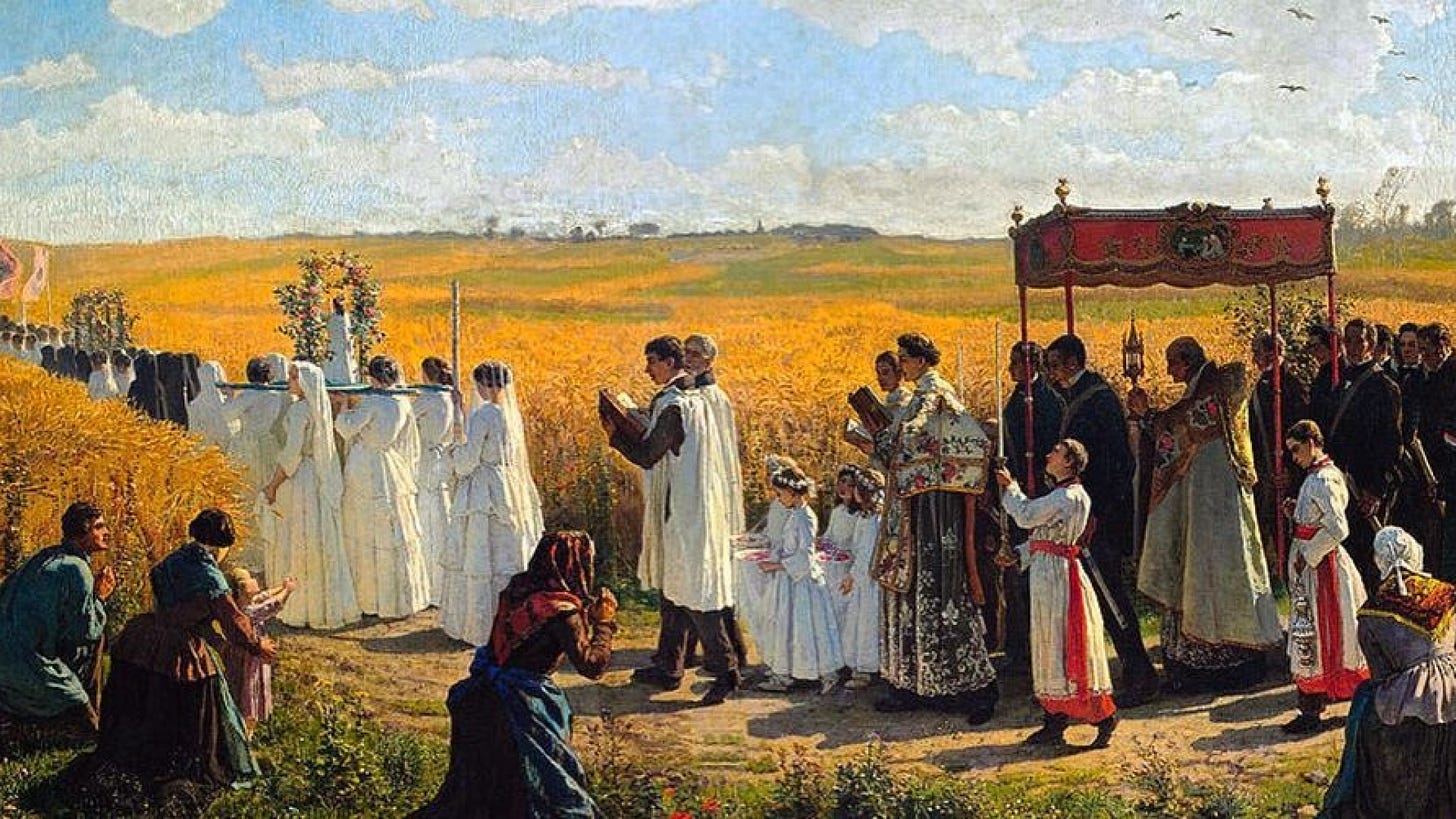What Are the Rogation Days?
The term Rogation comes from the Latin rogare, meaning “to ask” or “to beseech.” Rogation Days are times set aside by the Church to implore God's mercy, protection, and blessings—particularly in the face of natural dangers and in supplication for a fruitful harvest. Most visibly, they are marked by penitential prayers and, most notably, a procession before Mass.
Historical Background
The Major Rogation – April 25
The Major Rogation takes place annually on April 25, coinciding with the Feast of St. Mark the Evangelist—though the two are liturgically unrelated. It is called “Major” because the Litaniae Maiores (“Greater Litanies”) are sung during the procession.
This observance began in 6th-century Rome under Pope St. Gregory the Great, who replaced the pagan agricultural festival Robigalia with Christian prayer and procession. The Major Rogation is the oldest of all Rogation observances.
The Minor Rogations – Monday to Wednesday before Ascension
In the 5th century, the Diocese of Vienne in Dauphiny (modern France) was afflicted by earthquakes and other natural disasters. In response, St. Mamertus, the local bishop, instituted public processions and penitential acts on the three days preceding Ascension Thursday—Monday, Tuesday, and Wednesday.
These “Minor Rogations” were later introduced to the Roman Church by Pope Leo III in the year 816 and spread throughout the Western Church.
During the processions, the Litany of the Saints is sung, along with Psalms and other prayers. The faithful seek to appease God’s justice, avert calamity, and entreat Him for a safe and plentiful harvest.
Liturgical and Devotional Elements
The procession before Mass traditionally takes place outdoors, often traversing the boundaries of the parish or a particular property. This custom gave rise to the term “Beating the Bounds.” In some places, the faithful would use sticks to physically strike the ground as they prayed—symbolically driving away evil spirits and invoking God’s protection.
Liturgical Form
The Litany of the Saints is sung at the start.
When the invocation “Holy Mary” is reached, the procession begins.
Psalm 69 (Deus, in adjutorium meum intende – “O God, come to my assistance”) follows, along with other penitential psalms and prayers.
The procession and Mass are celebrated in violet vestments, symbolizing penance.
The tone is supplicatory and solemn, not mournful.
Modern Practice and Revival
The liturgical changes of the 1960s effectively removed Rogation Days from regular Church life. Though some rural parishes continued the observance for cultural or devotional reasons, it became increasingly rare. Today, few Catholics are even aware of this ancient tradition.
A Call to Revival
This author encourages a domestic revival of the Rogation Days. Even if your parish does not celebrate them, your family can!
How to Pray a Rogation Procession at Home
Here’s a simple guide to conducting a domestic Rogation Procession:
Begin the Litany of the Saints kneeling before a Crucifix or a home altar.
At the invocation “Holy Mary”, begin your procession, walking the perimeter of your home, yard, or property while “beating the bounds” with a stick or staff.
After the Litany, pray Psalm 69 and the remaining invocations.
Upon returning to the altar or crucifix, conclude with this Collect from the Mass of Rogation:
Let us pray:
Grant, we beseech Thee, O almighty God, that we, who in our affliction put our trust in Thy mercy, may ever be defended by Thy protection against all adversity.
Through Our Lord Jesus Christ, Thy Son, Who liveth and reigneth with Thee, in the unity of the Holy Ghost, ever one God, world without end. Amen.


